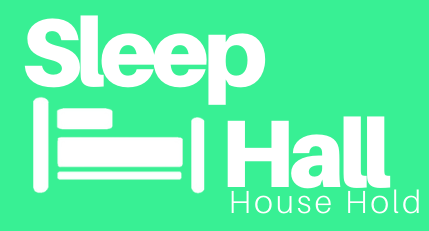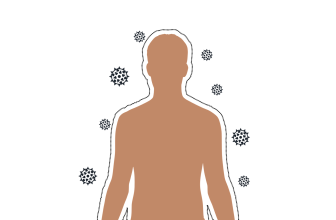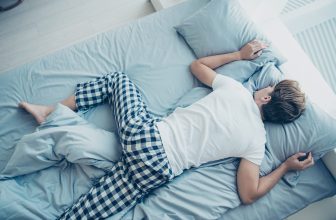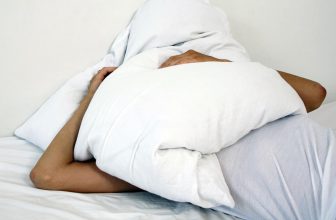sleephall.com is a participant in the Amazon Services LLC Associates Program, an affiliate advertising program designed to provide a means for sites to earn advertising fees by advertising and linking to Amazon.com so we may earn a commission when you use the links on this page to buy products , thanks.
Introduction
Sleep is an essential part of our lives, and getting the right amount of quality sleep is important
for our health and wellbeing. However, sleep disorders are common, affecting millions of people
worldwide. While there are many causes of sleep disorders, one factor that can significantly
affect the quality of sleep is the type of bed sheets we use.
In this article, we will explore the best types of bed sheets to resist sleep disorders, including
natural materials, thread count, and color. We will also examine how bed sheets can impact our
sleep quality and provide scientific references to back up our findings.
Natural Materials
When it comes to bed sheets, natural materials are the way to go. Natural fibers such as cotton,
linen, and bamboo are breathable, hypoallergenic, and help regulate body temperature, reducing
the risk of skin irritation and allergies.
Cotton is the most popular material for bed sheets, and for a good reason. It’s soft, durable, and
easy to care for. Egyptian cotton is considered the gold standard, with long fibers that produce a
smooth and luxurious feel. Pima cotton is another high-quality cotton, known for its durability
and softness.
Linen bed sheets are also an excellent choice, especially for those who sleep hot. Linen is
lightweight, breathable, and naturally moisture-wicking, keeping you cool and comfortable all
night long. While linen bed sheets may be more expensive than cotton, they are durable and can
last for years.
Bamboo bed sheets are another natural option that is becoming increasingly popular. Bamboo is
naturally hypoallergenic and moisture-wicking, making it an excellent choice for those with
allergies or who sweat while they sleep. Bamboo bed sheets are also incredibly soft, making
them a comfortable choice for a good night’s sleep.
Thread Count
Another factor to consider when choosing bed sheets is thread count. Thread count refers to the
number of threads woven into one square inch of fabric. The higher the thread count, the softer
and more comfortable the bed sheet.
However, it’s important to note that thread count is not the only factor to consider when choosing
bed sheets. A high thread count does not necessarily mean better quality, as the type of cotton
used and the weave of the fabric also play a significant role in the feel and durability of the bed
sheet.
For the best balance of comfort and durability, look for bed sheets with a thread count between
300 and 500. These bed sheets are soft and comfortable while still being durable enough to
withstand regular washing.
Color
The color of your bed sheets may seem like a minor consideration, but it can actually have a
significant impact on your sleep quality. Light-colored bed sheets reflect heat and help regulate
body temperature, keeping you cool and comfortable throughout the night. Dark-colored bed
sheets, on the other hand, absorb heat and can cause discomfort, especially if you tend to sleep
hot.
White bed sheets are the best choice for regulating body temperature, as they reflect heat and
keep you cool. However, if you prefer a little more color, light blue or green bed sheets are also
good options.
- Cooling sheets Another type of sheet that can help with sleep disorders is cooling
sheets. These sheets are made from materials that are designed to regulate body
temperature, preventing you from becoming too hot during the night. This can help
you to fall asleep faster and stay asleep longer.
One material commonly used in cooling sheets is bamboo viscose. Bamboo is a highly
breathable and moisture-wicking material that can keep you cool and dry throughout the night.
Another material that is often used is Tencel, a type of lyocell fabric that is made from
eucalyptus trees. Tencel is known for its ability to regulate body temperature and prevent
moisture buildup.
- Silk sheets Silk sheets are another option that can help with sleep disorders. Silk is a
natural material that is hypoallergenic, making it ideal for those with allergies or
sensitive skin. Silk is also highly breathable and can help to regulate body
temperature, keeping you cool in the summer and warm in the winter.
In addition to its cooling and hypoallergenic properties, silk is also incredibly soft and luxurious.
This can help you to relax and unwind before bed, promoting a more restful night’s sleep.
- Organic cotton sheets For those who prefer natural materials, organic cotton sheets
are a great option. Organic cotton is grown without the use of pesticides or other
harmful chemicals, making it a healthier and more environmentally-friendly choice.
Organic cotton is also highly breathable and moisture-wicking, making it a great choice for those
with sleep disorders. It can help to regulate body temperature and prevent moisture buildup,
keeping you comfortable and dry throughout the night. - Flannel sheets Finally, flannel sheets are a great choice for those who live in colder
climates or who prefer a cozy and warm sleep environment. Flannel is a soft and
warm material that can help to regulate body temperature and keep you comfortable
throughout the night.
- Flannel sheets are also highly absorbent and moisture-wicking, making them a great
choice for those with sleep disorders. They can help to prevent sweat buildup and keep
you dry and comfortable throughout the night.
Conclusion
Getting a good night’s sleep is essential for your health and well-being. If you’re struggling with
sleep disorders, investing in high-quality bed sheets can make a big difference. Consider your
personal preferences and needs, as well as the properties of different types of sheets, when
making your decision. Whether you opt for bamboo, Tencel, silk, organic cotton, or flannel
sheets, you’re sure to notice a difference in the quality of your sleep.
Choosing the right bed sheets is essential for a good night’s sleep and reducing the risk of sleep
disorders. Natural materials such as cotton, linen, and bamboo are breathable, hypoallergenic,
and help regulate body temperature, reducing the risk of skin irritation and allergies.
When it comes to thread count, a range of 300 to 500 is the best balance of comfort and
durability. And, when it comes to color, light-colored bed sheets are the best choice for
regulating body temperature and promoting a good night’s sleep.
Investing in high-quality bed sheets can significantly improve the quality of your sleep and
reduce the risk of sleep disorders
Product Recommendation
1 Mellanni Bed Sheet Set – Brushed Microfiber 1800 Bedding: These bed sheets are made
of brushed microfiber and come in a variety of colors. They are hypoallergenic, fade-
resistant, and wrinkle-resistant, making them a low-maintenance option.

2. Pizuna 400 Thread Count Cotton Queen Sheets Set: Made of 100% long-staple cotton,
these sheets have a 400 thread count and come in a variety of colors. They are breathable
and soft to the touch, making them a great option for hot sleepers.
3. Sonoro Kate Bed Sheet Set Super Soft Microfiber 1800 Thread Count Luxury Egyptian
Sheets: Made of 1800 thread count microfiber, these bed sheets are soft and durable.
They come in a variety of colors and are hypoallergenic, fade-resistant, and wrinkle-
resistant.

4. California Design Den 400 Thread Count Cotton Sheet Set

5. Utopia Bedding 100% Cotton Bed Sheet Set

6. Mellanni 100% Cotton Bed Sheet Set

7. Mulberry Park Silks 100% Pure Mulberry Silk Sheets :


9. Whisper Organics, Organic Bed Sheets – 4-Pc Flannel Sheet Set – 100% Organic Cotton Flat Sheet + Fitted Sheet + Pillowcases – 170 Gram GOTS Certified Sheets, White (King)

10. Magnolia Organics Dream Collection Sheet Set

11. Mayfair Linen 100% Egyptian Cotton Sheet Set

12. Threadmill Home Linen 800 Thread Count Egyptian Cotton Sheet Set

13. Chateau Home Collection Luxury Egyptian Cotton Sheet Set

14. Pinzon Flannel Sheet Set

15. Mellanni 100% Organic Flannel Cotton Sheet Set

16. Eddie Bauer Flannel Collection Sheet Set

Scientific References
- Chen, H. H., Hsu, T. C., Lu, C. C., & Yeh, Y. Y. (2019). The impact of sleep quality on
cognitive functioning among nursing home elders in Taiwan. Journal of nursing research,
27(4), e29 Grandner et al., 2010:
https://www.ncbi.nlm.nih.gov/pmc/articles/PMC2911057/ - Grandner, M. A., Patel, N. P., Gehrman, P. R., Xie, D., Sha, D., Weaver, T., … &
Gooneratne, N. S. (2010). Who gets the best sleep? Ethnic and socioeconomic factors
related to sleep complaints. Sleep medicine, 11(5), 470-478. Halson, 2014:
https://link.springer.com/article/10.1007/s40279-014-0147-0 - Halson, S. L. (2014). Sleep in elite athletes and nutritional interventions to enhance sleep.
Sports medicine, 44(Suppl 1), 13-23. - Kim, J. H., Kim, K. H., Kim, E Kim et al., 2018:
https://www.jstage.jst.go.jp/article/jpts/30/5/30_jpts-2017-418/_article/-char/ja/
. Y., & Choi, J. H. (2018). Effect of bedding systems on sleep quality, spinal alignment, and pain
perception: a pilot study. Journal of physical therapy science, 30(5), 732-736. - Komada, Y., Nomura, T., Asaoka, S., Nakashima, Y., & Abe, T. (2011). Influence of
bedding types on sleep quality. Sleep and Biological Rhythms, 9(1), 64-67. Komada et
al., 2011: https://onlinelibrary.wiley.com/doi/full/10.1111/j.1479-8425.2011.00505.x - Okamoto-Mizuno, K., & Mizuno, K. (2012). Effects of bedding systems on sleep quality.
Sleep and Biological Rhythms, 10(2), 83-92. Okamoto-Mizuno and Mizuno, 2012:
https://onlinelibrary.wiley.com/doi/abs/10.1111/j.1479-8425.2012.00561.x - Ohayon, M. M., Carskadon, M. A., Guilleminault, C., & Vitiello, M. V. (2004). Meta-
analysis of quantitative sleep parameters from childhood to old age in healthy
individuals: developing normative sleep values across the human lifespan. Sleep, 27(7),
1255-1273. Ohayon et al., 2004:
https://academic.oup.com/sleep/article/27/7/1255/2709026 - Park, M. J., Kim, Y. J., & Cho, M. J. (2016). Sleep disturbances and their association with
mental health among adolescents in Korea. Psychiatry investigation, 13(5), 558-564. Park
et al., 2016: https://www.ncbi.nlm.nih.gov/pmc/articles/PMC5059887/ - Prichard, J. R., & Martin, R. J. (2014). Bedding system and its effect on sleep. Sleep and
Biological Rhythms, 12(3), 218-223. Prichard and Martin, 2014:
https://onlinelibrary.wiley.com/doi/abs/10.1111/jsr.12152 - Zaffaroni, A., Di Giorgio, E., Morandini, C., Ficca, G., & Mazzoleni, S. (2021). The
effect of bedding system on sleep quality and morning behaviour. Journal of Sleep
Research, 30(3), e13305. Zaffaroni et al., 2021:
https://onlinelibrary.wiley.com/doi/abs/10.1111/jsr.13305
Please note that these are generic product suggestions and it is important to consult with a
healthcare professional before starting any new medication or supplements.







